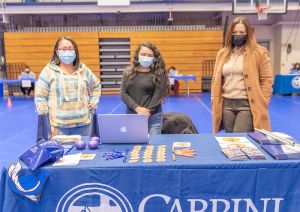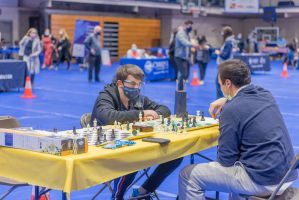Even in challenging times, students are finding ways to connect with each other through new types of campus programming and outreach.
Student involvement has always been an important part of the college experience. In addition to the academic program, taking part in clubs and organizations helps bring students together who may share similar interests. These experiences help expose students to new hobbies, expand on their current passions and develop leadership skills. Campus organizations help to enhance student life by providing opportunities for socialization. However, the COVID-19 pandemic has introduced new challenges to student life on college campuses across the world.
Due to CDC guidelines, individuals are strongly encouraged to maintain physical distancing of at least six feet, wear masks at all times, increase proper hygiene methods through hand washing and enhance disinfecting protocols on surfaces. Although these measures have been proven to minimize the spread of COVID-19, it also means that certain gatherings, activities and events can no longer occur in the same manner as they once did. This has forced colleges and universities to reimagine their student life programming this year.
Cabrini is one example of a school that has needed to get creative with how to bring students together and create connections in the community while abiding by CDC guidelines.

“Although we’re glad we can still hold some events in person, there is a lot of extra thought that has to be put into all events to ensure they are safe, such as considering how many people are able to be in a room at a time how to arrange the rooms for social distancing, and what kinds of fun activities can happen socially-distanced,” Lisa Podolsky, assistant director for leadership development, said.
In addition to the time and effort that goes into rethinking the setup of events and how they will work for students, Cabrini has also needed to consider the different needs of their student population. This includes providing opportunities for students who live on-campus, but also those students who may be taking their courses remotely.
“We have worked to engage students virtually and also to alter programs to engage students both in-person and in remote locations,” Dr. Anne Filippone, executive director of student engagement & leadership, said. “We have some students living on campus and some who are commuting or taking all virtual courses, so there are challenges in how the clubs operate and how our students engage in the programs we offer.”
Since not all students are currently living on-campus, Cabrini has needed to be thoughtful with how to design activities that are both safe and inclusive. SEaL, which is The Center for Student Engagement and Leadership, has been one group on campus that has worked to maintain a vibrant student life for students.

“We adapted Bingo to be a hybrid event in the fall, and have tried to make it even more exciting by having a ‘Spooky Surprise’ theme last semester and ‘Bingo.Too.Lit’ theme this semester, which featured a DJ and a more interactive style of Bingo,” Podolsky said.
Even the way that Cabrini has chosen to advertise and promote upcoming events has switched to more virtual platforms in order to reach as many students as possible. Rather than hanging flyers around campus, most events are now being posted on social media sites and sent out via email. Individual clubs and organizations have also changed the way they gather and interact with each other. While some have continued to meet in person with safety measures in place, many have pivoted to an online model.
“Some clubs have been meeting in person, but a lot of clubs have been meeting virtually so that students can participate from anywhere. I know of some clubs that have innovated and are playing games together virtually, planning virtual movie nights, and doing trivia through Kahoot virtually,” Podolsky said.
Spectrum, which is Cabrini’s student organization that educates members on LGBTQIA+ and gender identities, as well as provides a campus safe space, is one campus group that has needed to reimagine how they continue to keep the club operating effectively this year.
“Spectrum’s biggest outreach effort has been centered on our social media: even amid all the uncertainties we are facing in this time, social media has been a huge constant in our changed world. That’s why we as Spectrum Execs have dedicated a lot of time and energy into making sure our social media has expanded and become more interactive,” Emily Neiman, president of Spectrum, said.
Even though virtual programming and engaging students on social media can be challenging, Neiman feels that student clubs, specifically Spectrum, have learned a lot from this experience that they can use in future years.
“While there are difficulties with engagement from the club leader perspective during these virtual-dependent times, I think it’s also important to recognize just how much we have accomplished — and indeed, how much we can apply when the world has calmed down,” Neiman said.
Despite the impact of the pandemic, student life on campus has adapted and continues to provide opportunities and experiences for students to interact and engage with each other.


